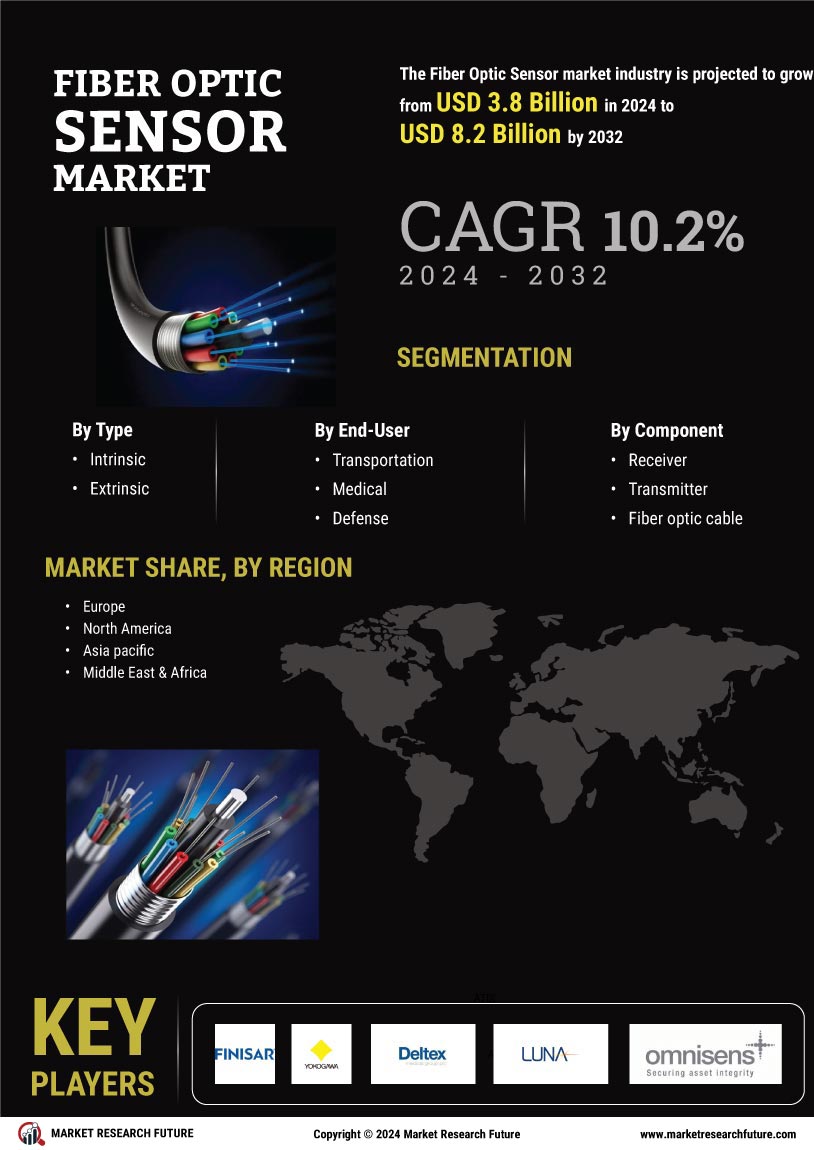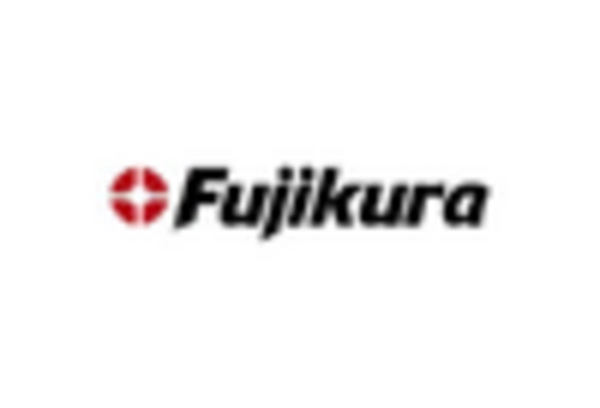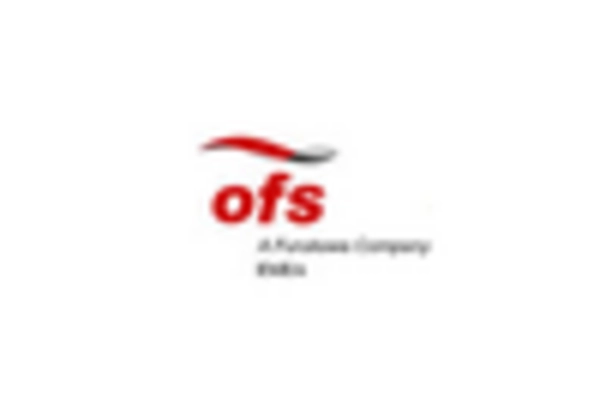Expansion in Oil and Gas Sector
The Fiber Optic Sensor Market is experiencing expansion within the oil and gas sector, where these sensors are increasingly employed for monitoring and safety applications. Fiber optic sensors are adept at detecting temperature changes, pressure variations, and strain in pipelines, which is critical for preventing leaks and ensuring operational safety. The oil and gas industry is projected to invest heavily in fiber optic technologies, with estimates suggesting a market growth rate of around 9% in the coming years. This investment is driven by the need for enhanced monitoring capabilities and the desire to minimize environmental risks associated with oil and gas extraction. As companies prioritize safety and efficiency, the adoption of fiber optic sensors is likely to become a standard practice, thereby bolstering the Fiber Optic Sensor Market.
Increased Adoption in Healthcare
The Fiber Optic Sensor Market is witnessing increased adoption in the healthcare sector, where precision and reliability are paramount. Fiber optic sensors are utilized in various medical applications, including minimally invasive surgeries and patient monitoring systems. Their ability to provide real-time data with high accuracy makes them invaluable in clinical settings. The market for fiber optic sensors in healthcare is expected to expand significantly, with projections indicating a growth rate of approximately 12% annually. This growth is fueled by advancements in medical technology and the rising demand for non-invasive diagnostic tools. As healthcare providers seek to improve patient outcomes and operational efficiency, the integration of fiber optic sensors into medical devices is likely to become more prevalent, further driving the Fiber Optic Sensor Market.
Advancements in Manufacturing Processes
The Fiber Optic Sensor Market is benefiting from advancements in manufacturing processes that enhance the production and application of fiber optic sensors. Innovations in materials and fabrication techniques have led to the development of more efficient and cost-effective sensors. These advancements enable manufacturers to produce sensors that are not only more reliable but also capable of operating in extreme conditions. The market is projected to grow at a compound annual growth rate of around 10%, driven by these technological improvements. As industries seek to optimize their operations and reduce costs, the demand for high-performance fiber optic sensors is likely to increase. This trend suggests that the Fiber Optic Sensor Market will continue to evolve, driven by the need for enhanced manufacturing capabilities and improved sensor performance.
Growing Focus on Environmental Monitoring
The Fiber Optic Sensor Market is increasingly influenced by a growing focus on environmental monitoring. As concerns about climate change and environmental degradation intensify, industries are seeking effective solutions to monitor environmental parameters. Fiber optic sensors offer a unique advantage in this regard, as they can be deployed in remote and harsh environments to measure temperature, pressure, and chemical concentrations. The market for environmental monitoring using fiber optic sensors is anticipated to grow at a rate of approximately 11% annually. This growth is driven by regulatory requirements and the need for real-time data to inform decision-making. As organizations strive to meet sustainability goals, the integration of fiber optic sensors into environmental monitoring systems is likely to gain traction, further enhancing the Fiber Optic Sensor Market.
Rising Demand for High-Speed Data Transmission
The Fiber Optic Sensor Market is experiencing a notable surge in demand for high-speed data transmission. As industries increasingly rely on rapid data transfer for operations, fiber optic sensors provide a solution that meets these needs. The ability of fiber optics to transmit data over long distances without significant loss is a key advantage. This demand is particularly pronounced in telecommunications and data centers, where the need for bandwidth continues to escalate. According to recent estimates, the fiber optic sensor market is projected to grow at a compound annual growth rate of over 10% in the coming years, driven by this insatiable appetite for speed and efficiency. Consequently, companies are investing heavily in fiber optic technologies to enhance their infrastructure, thereby propelling the Fiber Optic Sensor Market forward.

















Leave a Comment